India’s women’s football team has taken a historic step forward by qualifying for the AFC Women’s Asian Cup 2026. With tactical discipline and standout performances, the Blue Tigresses now stand closer than ever to earning their first-ever spot at the FIFA Women’s World Cup 2027.
Under coach Crispin Chettri, appointed in February 2025, India adopted a disciplined, possession-based structure. Despite a shaky pre‑qualification run including a poor showing at the UAE Pink Ladies Cup and friendlies versus Uzbekistan the team built cohesion, strategic shape, and competitive resilience.
AFC Women’s Asian Cup 2026 Qualifiers: The Tactical Masterclass
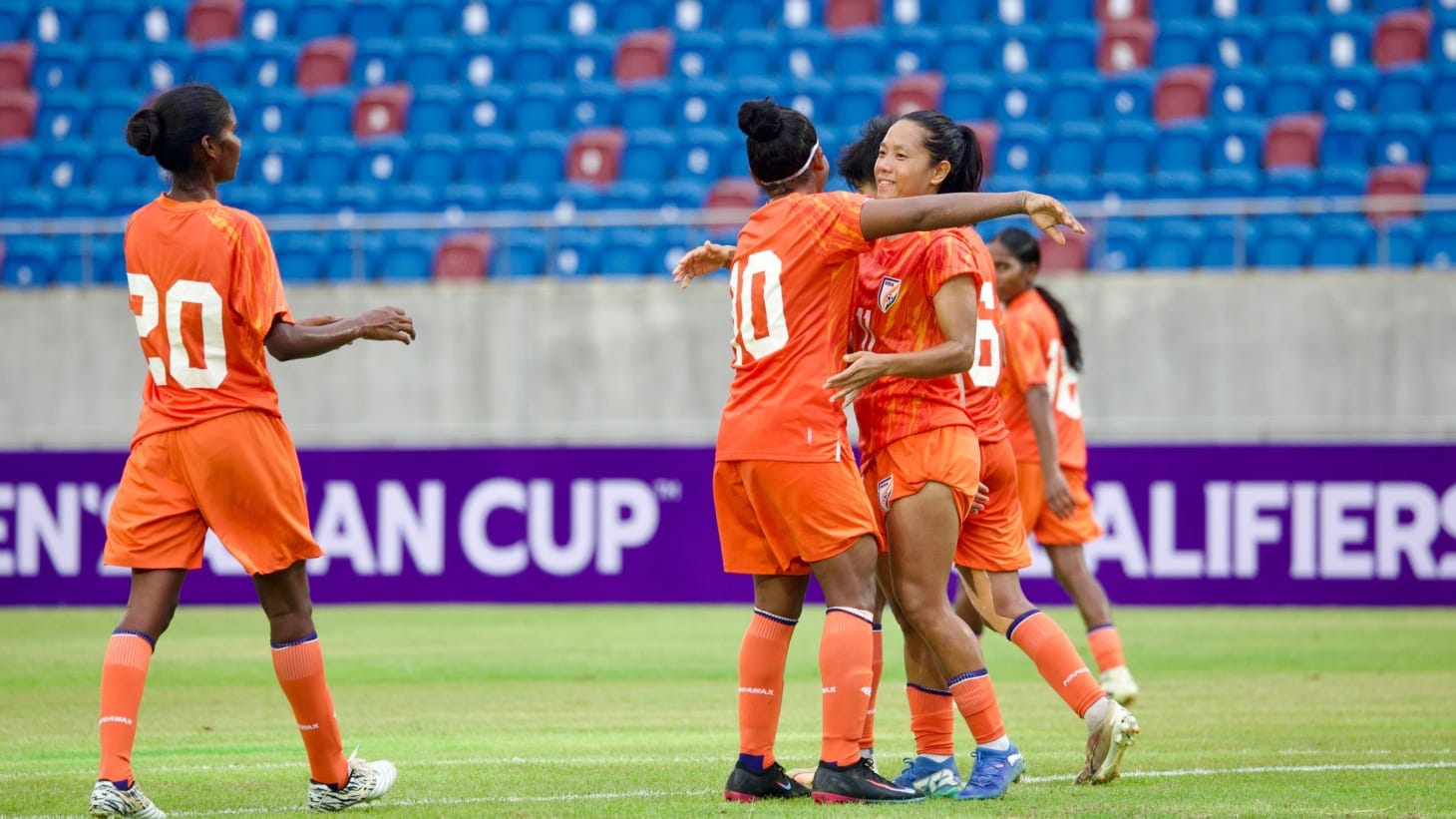
India was drawn into Group B, alongside Mongolia, Timor‑Leste, Iraq, and hosts Thailand. Only the group winners would advance to the 2026 finals in Australia also becoming the gateway to FIFA Women’s World Cup 2027 qualification through the continental tournament structure.
Qualifier-by-Game Breakdown:
| Date | Opponent | Result | Goals For | Goals Against | Key Tactical Notes |
|---|---|---|---|---|---|
| 23 Jun 2025 | Mongolia | 13‑0 W | 13 | 0 | High‑press + rapid transitions; Pyari Xaxa scored 5; excellent wide support |
| 29 Jun 2025 | Timor‑Leste | 4‑0 W | 4 | 0 | Wide-play and wing crosses; Manisha Kalyan with a brace; disciplined defence |
| 2 Jul 2025 | Iraq | 5‑0 W | 5 | 0 | Midfield control; Sangita and Manisha again on scoresheet; built-up possession |
| 5 Jul 2025 | Thailand (H) | 2‑1 W | 2 | 1 | Tight defensive block, disciplined shape; Sangita Basfore brace to win on opponent’s turf |
India topped the group 4W, GD +23, 12 pts, ahead of Thailand (+21 GD, 9 pts).
Source: Chase Your Sports, ESPN
Tactical Blueprint & Key Players

Formation & Style
Coach Chettri deployed a 4‑3‑3 that morphed into 4‑5‑1 in defence, focusing on central solidity and wide outlets.
Midfield engine: Sangita Basfore orchestrated tempo, scored critical goals in both the Iraq and Thailand games. Her second goal against Thailand sealed history and brought her to tears as she lay on the Chiang Mai turf after full‑time .
Wing dynamics: Manisha Kalyan combined pace and sharp finishing, particularly against Timor‑Leste and Iraq. Shilky Devi provided assists and creative thrust from Manipur, helping breakup opposition lines.
Defensive backbone: Veterans like captain Ashalata Devi and Ranjana Chanu anchored a compact defense, conceding only one goal in four matches.
Source: Refer to this article for full analysis
How AFC Qualification Sets Up World Cup 2027 Pathway

Qualification Flow
The 2026 AFC Women’s Asian Cup in Australia (March 1-21, 2026) will feature 12 teams (hosts Australia plus top three from 2022 and eight group winners like India).
From the group stage, top two teams in each group plus the two best third-placed sides qualify for six direct FIFA Women’s World Cup 2027 slots, while two more go to inter‑confederation playoffs (joined by host Brazil).
India’s route:
| Steps | Action |
| Step 1 | Win AFC Qualifier Group (Group B) |
| Step 2 | Compete at AFC Women’s Asian Cup 2026 Finals (Top 12) |
| Step 3 | Finish in: – Top 2 in Group ➝ Direct WC Spot – OR Best Two 3rd-Placed ➝ Direct WC Spot – OR 3rd/4th Best ➝ Intercontinental Playoffs |
| Final Goal | Qualify for FIFA Women’s World Cup 2027 |
Source: Devdiscourse
Next Phases & Tactical Roadmap to World Cup
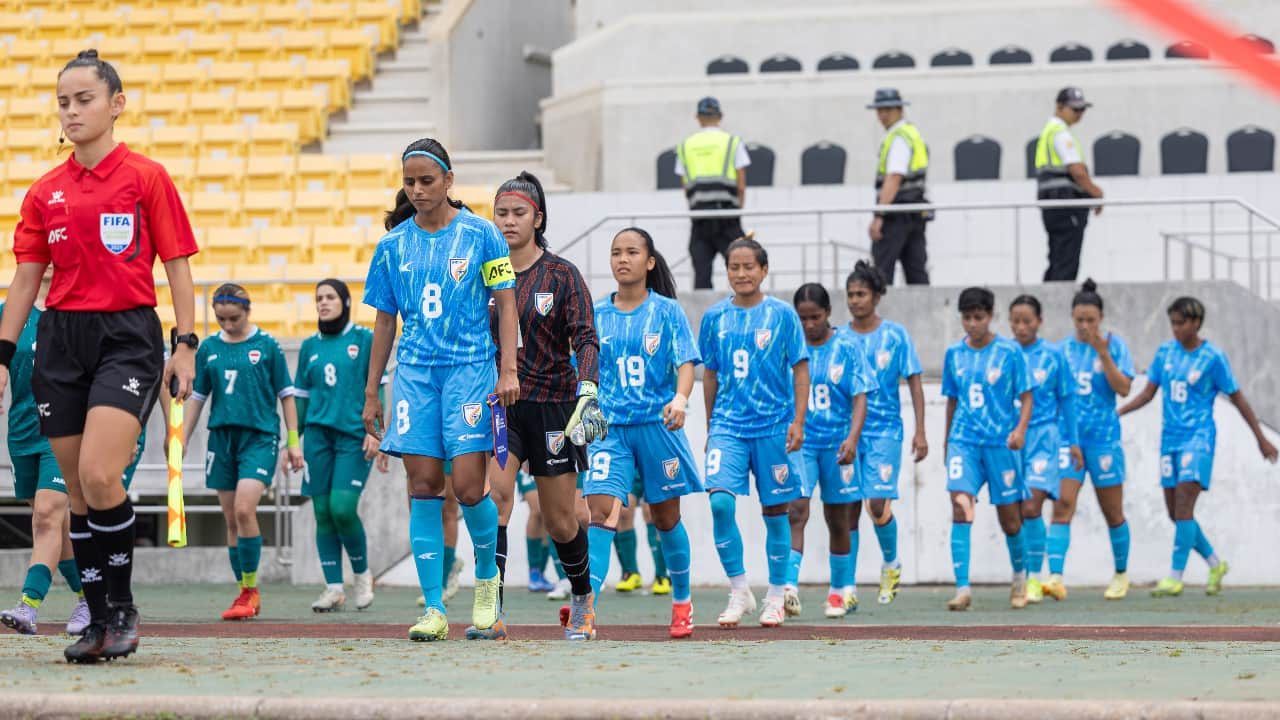
Training & Preparations
The AIFF has planned 12 international friendlies (e.g. vs Japan, Vietnam, Chinese Taipei) to build experience against established Asian sides. Captains like Sweety Devi Ngangbam emphasise these matches as platform to test Chettri’s tactical systems under pressure. Source: Devdiscourse
Tactical Goals
- Adapt to higher tempo: Faster build-up, reduced turnovers, pressing efficiency.
- Set‑piece optimization: Critical vs stronger teams.
- Midfield control: Retain structure even under high‑press.
- Defensive transitions: Quick recovery shape after loss of possession.
Emotional Connect & Fan Resonance
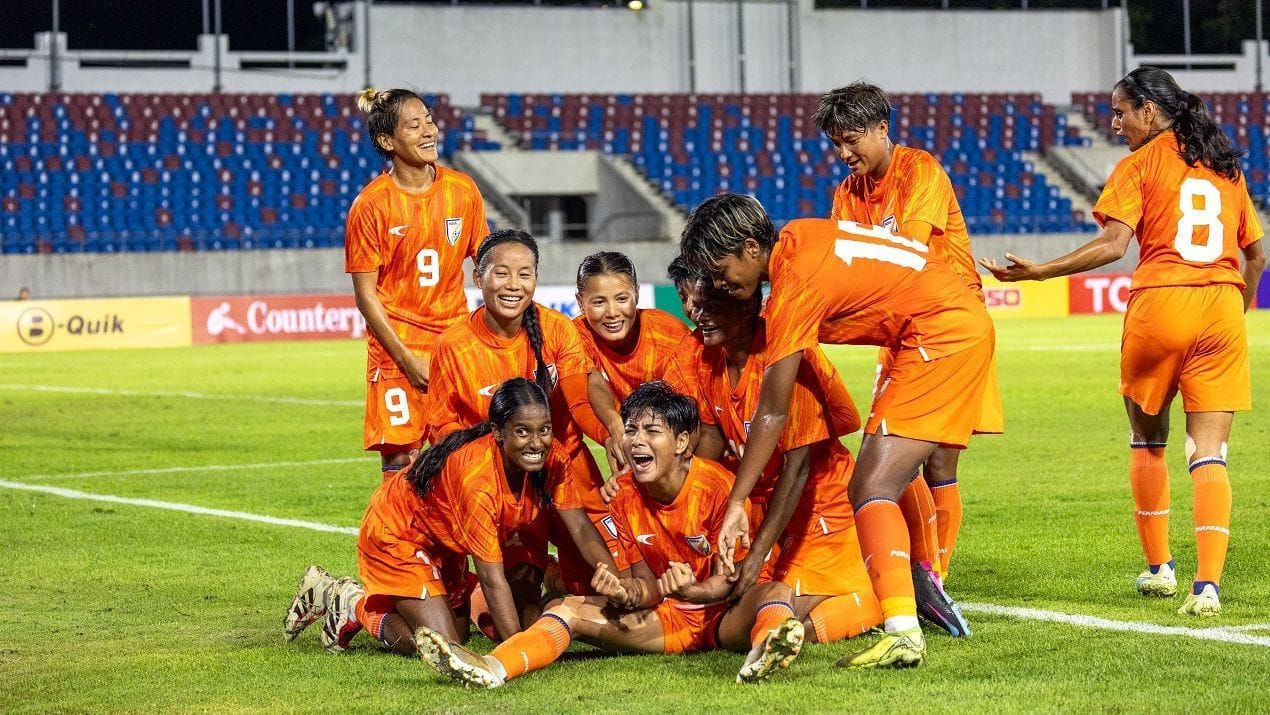
Though the tone remains technical, the emotional connection is clear: this team carries the scars of past disappointments especially the 2022 Asian Cup exit due to COVID withdrawal and years of structural neglect. Source: Olympics
Fans many in India who once viewed women’s football as peripheral now see Blue Tigresses as symbols of resilience and hope. The narrative of tribal players like Kiran Pisda, who rose from dusty barefoot fields in Balod to national jersey, resonates deeply across India’s hinterlands.
On the pitch, these tactical triumphs generate collective pride: fans chanting names like Basfore, Kalyan, Shilky and believing that World Cup qualification is truly within reach.
Conclusion
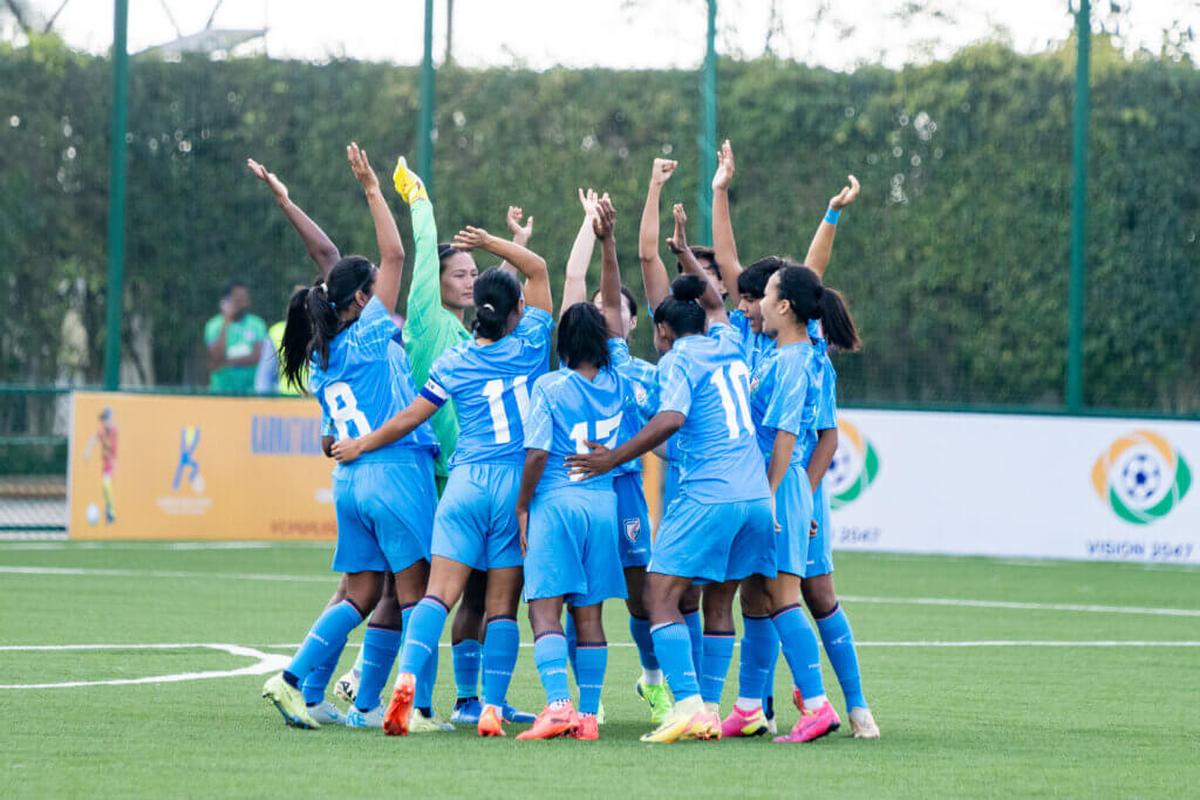
India’s AFC Women’s Asian Cup qualification story is a technically executed campaign built on structure, discipline, and smart game plans. With standout performers anchoring midfield, creative wings supplying goals, and a rock-solid defence, the team has established a firm foot in Asia’s elite tier.
Now the immediate tactical goal is clear: use the AFC finals in Australia 2026 as a launchpad to reach the FIFA Women’s World Cup in Brazil 2027. The roadmap is precise. The team is ready. The hopes of a nation both tactical and emotional ride on this promising journey.
All the best team!
Check out the latest article on Sportspedia Zone about “Who is Khalid Jamil? and Why He Could Be Key to Indian Football’s Future.”
Bookmark Sportspediazone for more sporting updates and,
Stay tuned!

[…] 2025 Women’s Asia Cup was a showcase of the continent’s growing competitiveness in hockey. While India emerged as […]
[…] India just wrapped up a pretty dominant 4-1 ODI series win against Australia. And apparently, a big reason for that success was the presence of star batter Virat Kohli. His long-time coach, Rajkumar Sharma, recently shared how Kohli really inspired the entire team. This comes as Indian CRICKET looks ahead to the 2027 World Cup. […]